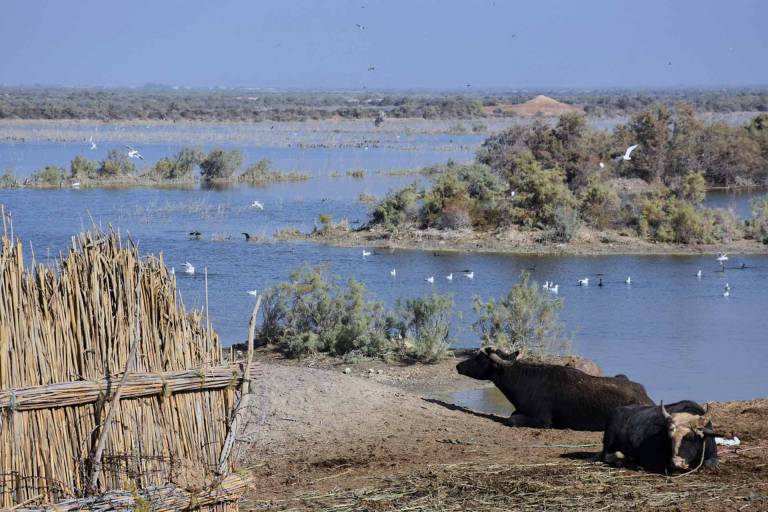The past, present and future of the Mesopotamian marshes
24 September 2021

Overview
The Mesopotamian marshes carry huge environmental and cultural significance, yet have been ravaged by conflict, oil, pollution and despotism, and face an uncertain present and future. This report presents new visualisation-led perspectives on the marshes, based on CEOBS’ research that was part-funded by the Nahrein Network, and undertaken in association with the University of Thi-Qar, Iraq.
Although much has been written about the marshes, new insights can still be found. Our comparison here of 1967 declassified spy satellite imagery with that from the present day brings to light the scale of the cultural erasure of the Marsh Arabs. We also provide new perspectives on the current threats to the marshes – from pollution, fire, saltwater intrusion and the oil industry – although much remains unknown. This is particularly true for the future climate of the Mesopotamian marshes, which may provide crucial ecosystem services for the region, amidst the alarming temperature projections we show. Finally, an exploration of the potential of eco-tourism shows the kind of locally driven nature-positive steps that could help the marshlands recover and flourish.
Key findings
New insights into the scale of marshland drainage and cultural erasure from 1967 to the present day, and the relative roles that oil exploration, agricultural expansion, conflict and state-sanctioned ecocide have played.
The marshes face significant and existential challenges from climate change and poor environmental governance, which leads to pollution from the oil sector and sewage, saltwater intrusion and fires.
Coupled climate-hydrological modelling is required to build the evidence base to inform government policy on how to protect and restore the marshes, to ensure that communities benefit from the ecosystem services they provide.
Ecotourism has the potential to help protect and monitor the marshes, provide sustainable livelihoods, and educate a global audience.
Read full report here
 Close
Close

